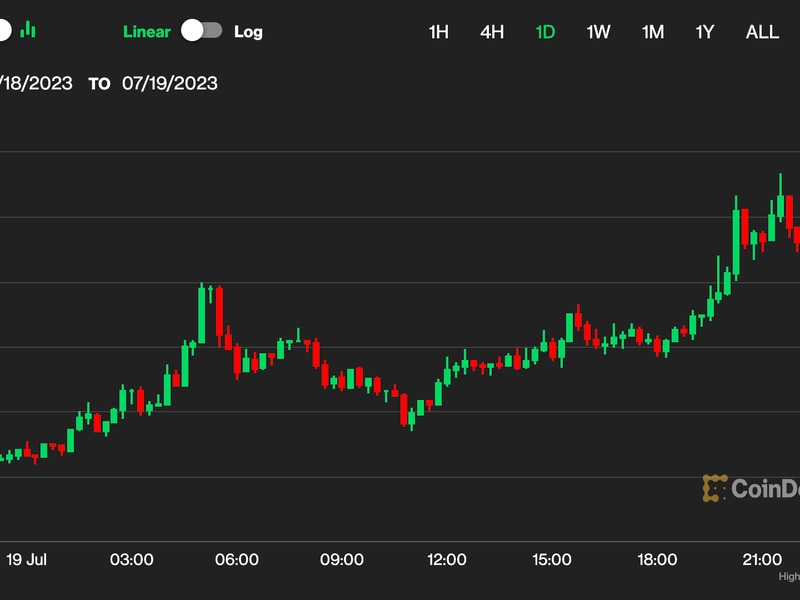Ether Hedging Activity Picks Up as U.S. ETF Debut Nears
-
Relative richness of ether’s short-term options-induced implied volatility suggests a pick up in hedging activity.
-
The U.S.-listed ether ETFs are expected to begin trading next week.
The impending debut of U.S.-based exchange-traded funds (ETF) tied to ether’s (ETH) spot price has investors scrambling to the options market to hedge or protect existing market positions from price swings.
Implied volatility (IV), or options-derived market expectations for price turbulence over a specific period, has ticked higher across timeframes, according to data sources Deribit and Kaiko. That’s a sign of increased demand for options or derivatives offering protection against price swings. A call protects against price rallies, while a put offers insurance against price slides.
The hedging activity has been more pronounced in short-term contracts, as evidenced by the recent relative richness of implied volatility determined by options contracts expiring on July 19 relative to those expiring on July 26. According to Kaiko, the July 19 expiry IV rose from 53% on Saturday to 62% on Monday, topping the July 26 expiry IV.
“The increase in IV on the July 19 contract suggests traders are willing to pay more to hedge existing positions and protect against sharp price moves in the short run. This spike in near-term contracts IV indicates a level of uncertainty among traders,” analysts at Kaiko said in Monday’s edition of the newsletter.
:format(jpg)/cloudfront-us-east-1.images.arcpublishing.com/coindesk/NZCJF4U4MBB6FBM6ZPYXRPAW4M.png)
Traders also expect increased ether volatility relative to bitcoin. According to data source Amberdata, the spread between Deribit’s 30-day ether and bitcoin implied volatility indices (BTC DVOL and ETH DVOL) has consistently averaged around 10% since late May, significantly higher than 5% in the first quarter.
:format(jpg)/cloudfront-us-east-1.images.arcpublishing.com/coindesk/24TLQJAXI5HZ5EU6RH5NJP5T6I.png)
Crypto exchange Bybit and analytics firm BlockScholes made a similar observation in a report shared with CoinDesk on Monday.
“Key findings indicate that investors are increasingly optimistic about ETH, particularly in anticipation of the imminent launch of the first Ether Spot ETFs in the United States. This optimism is reflected in ETH’s sustained volatility premium over BTC, which has persisted amid heightened market activity,” the report said.
The pick-up in hedging activity in ether is consistent with the uber-bullish expectations from the spot ether ETFs, which are expected to begin trading next Tuesday. According to Gemini, spot ether ETFs will likely draw $5 billion in net inflows in the first six months, boosting ether’s market value relative to bitcoin.
Besides, traders, mindful of the “sell-the-fact” phenomenon that followed the debut of bitcoin ETFs on Jan. 11, might be preparing for similar price volatility in ether.
Traders, however, should note that the present market mood and ether’s bullish positioning are significantly more measured than bitcoin in early January, suggesting low odds of a post-debut sell-the-fact pullback.
Edited by Parikshit Mishra.









